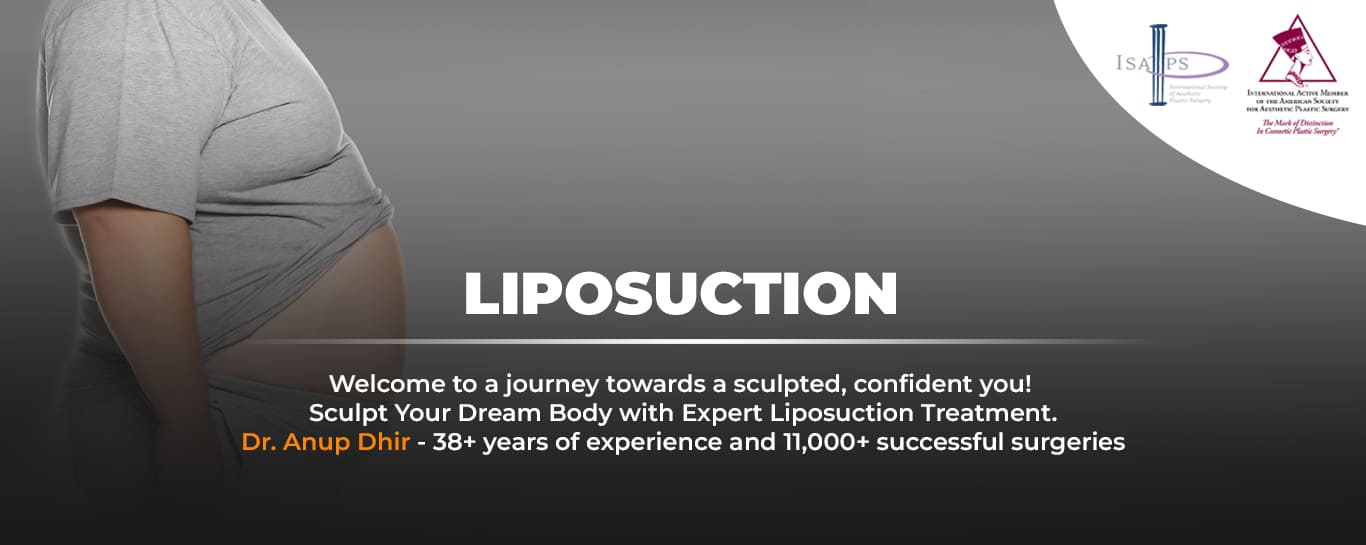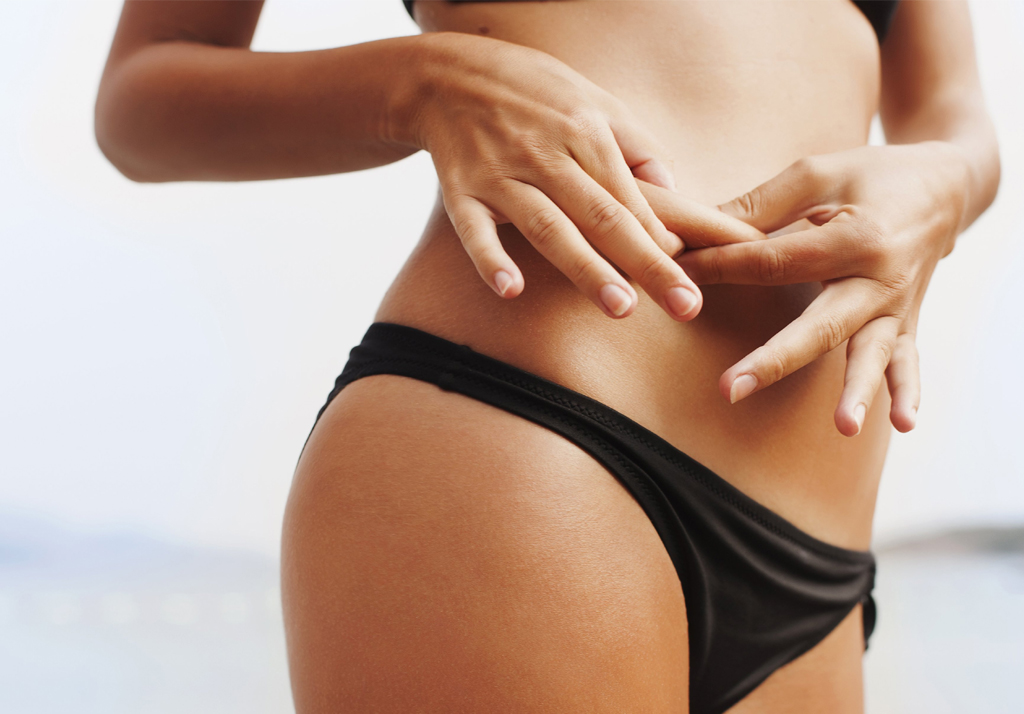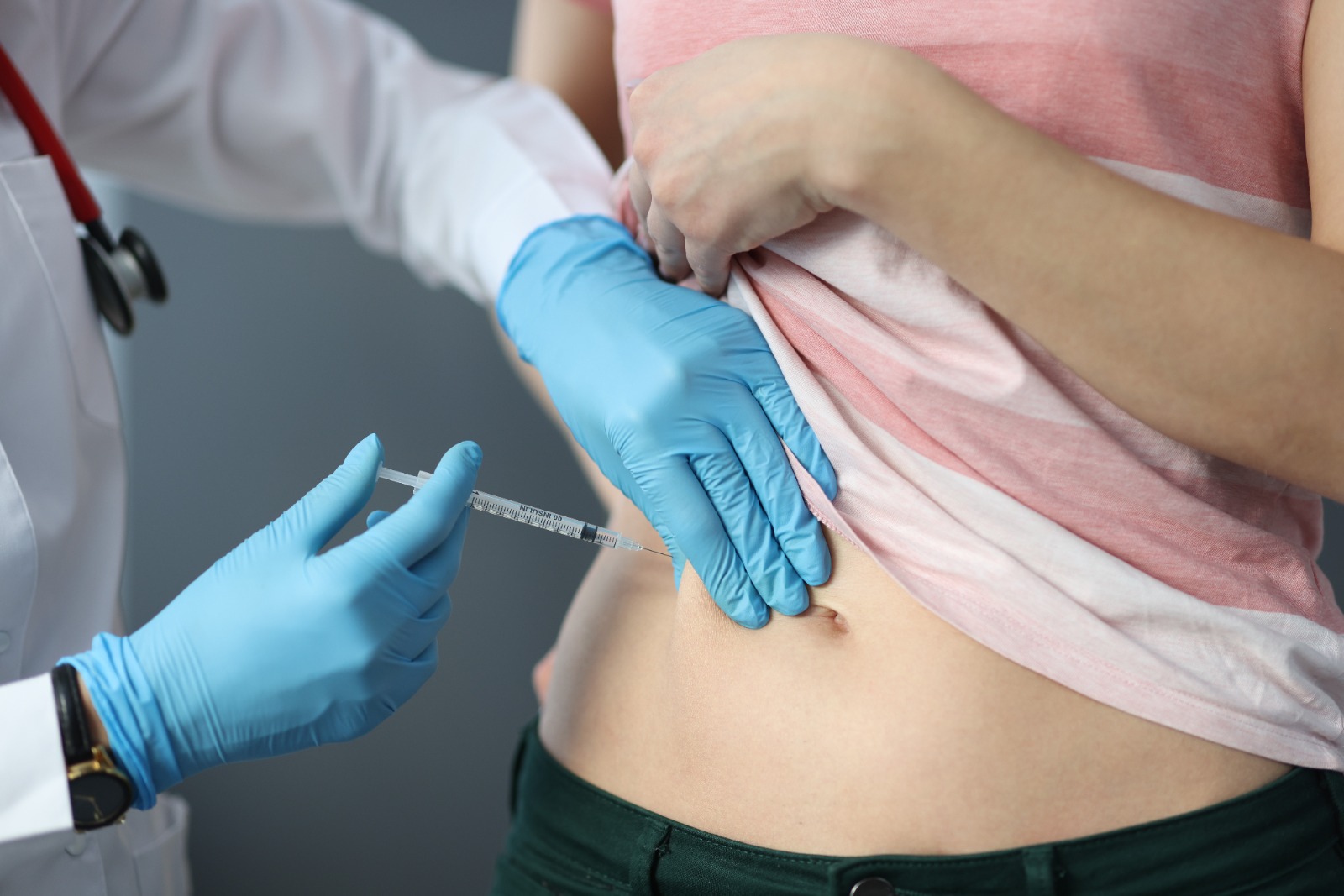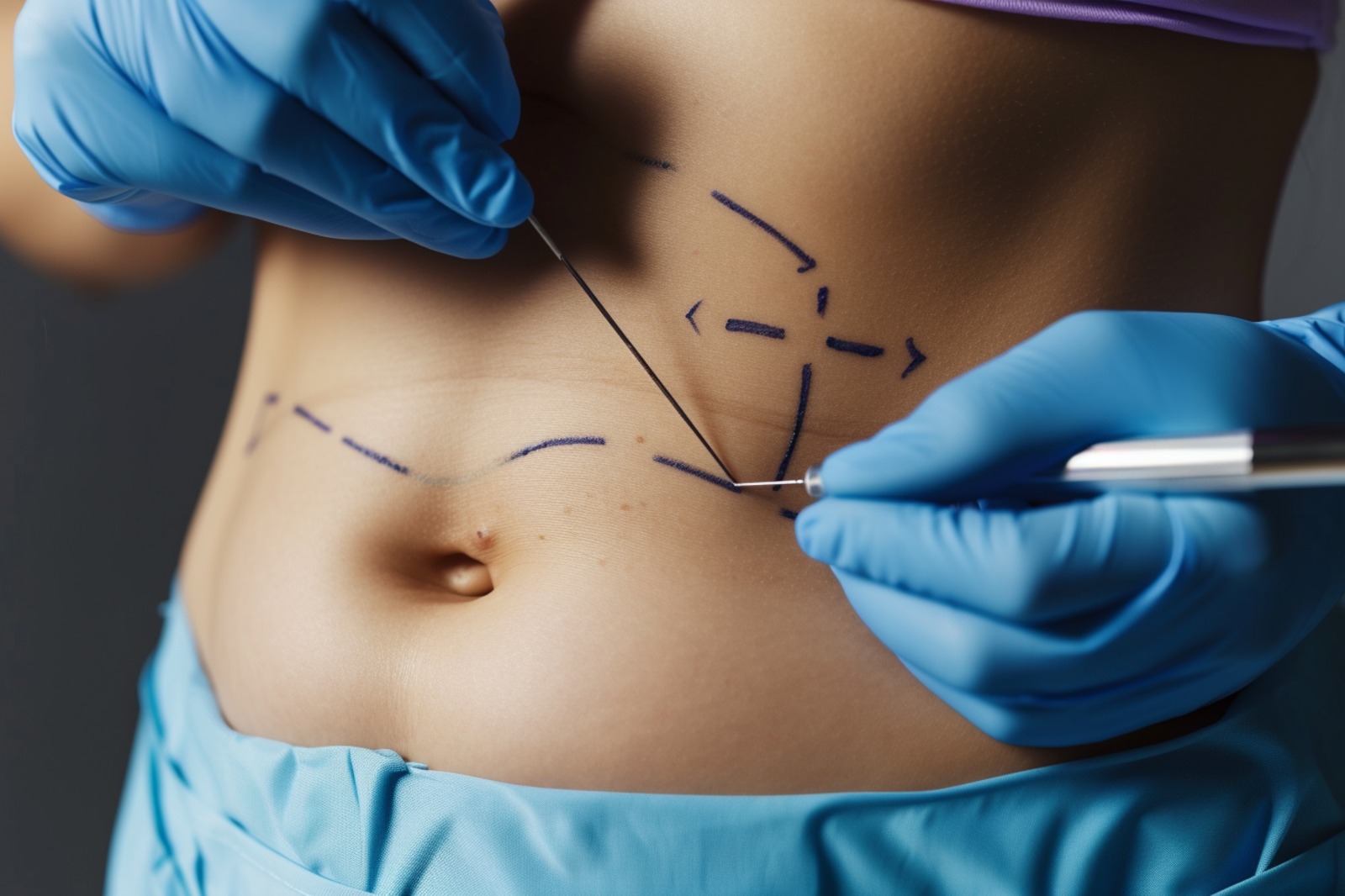
Liposuction removes small clumps of fatty tissue in various places in the body by vacuuming fat from the thighs, buttocks, hips, abdomen, back, arms, face, and neck using a high-vacuum instrument.
Liposuction is popular because of its efficacy (when performed by a trained surgeon) and leaves relatively tiny scars, generally less than a half-inch in length.
Liposuction neither treats obesity nor serves as a substitute for a proper diet and regular exercise.
It would help if you were of medium weight with localized excess fat to benefit the most from this therapy. You must also have elastic, healthy skin that can shrink uniformly following surgery.
Liposuction cannot treat skin laxity or reduce dimpling since it removes fat. Depending on the unique demands and the physician's chosen modes of treatment, the tumescent technique, superficial liposculpture, ultrasound-assisted lipoplasty (UAL), or other modifications of traditional liposuction.
From a risky experiment to a refined art form, Liposuction's path to becoming a booming today's cosmetic procedure is an untold story. It all began in the 1920s with a bold attempt by a French surgeon, but initial setbacks caused a long pause. It was in the 1980s that Liposuction gained popularity, thanks to advancements in technology and techniques. Today, it is one of the most commonly performed cosmetic procedures worldwide, with millions of successful surgeries each year. Decades later, European doctors renewed the idea with improved techniques, but safety concerns remained. The turning point came in 1982 with the introduction of the "Illouz Method," which offered a controlled and safer approach to fat removal. This innovation sparked further advancements, with American doctors like Jeffrey Klein pioneering the use of local anesthesia for a less invasive experience. Liposuction continues to be a popular choice, constantly adapting to new technologies like laser-assisted lipolysis.

Liposuction surgery entails the precise removal of excess fat cells from specific regions of the body. The procedure begins with the administration of anesthesia to ensure the patient’s comfort during the surgery. Different techniques are employed in Liposuction surgery, including the traditional, laser-assisted, and ultrasound-assisted methods.
In the classic Liposuction procedure, small incisions are made in the desired area, and a tiny cannula is inserted to extract the excess fat. Laser-assisted Liposuction employs laser technology to liquefy the fat before removal, making the process smoother. Meanwhile, ultrasound-assisted Liposuction uses ultrasound waves to break down fat cells, facilitating their removal.
The targeted areas for Liposuction include the abdomen, thighs, buttocks, hips, arms, back, and neck. The choice of these areas depends on an individual’s specific goals and desired outcomes.
Your body's energy releases the lipid content and breaks the cellular membrane.
Process of Liposuction Surgery
The first step in the process of liposuction surgery involves an initial consultation with a plastic surgeon. During this meeting, the surgeon will discuss the patient's goals, review their medical history, and evaluate the areas of the body that the patient wishes to target. The surgeon will also explain the various techniques available, potential risks and complications, and what to expect in terms of results.
Once a patient decides to proceed with Liposuction, pre-operative preparations and care are necessary, as follows:

1. Consultation:Discuss your goals, medical history, and expectations with a board-certified plastic surgeon.
2. Medical Clearance: Get a doctor's clearance for surgery to ensure you're healthy enough.
3. Blood Thinners:Stop taking blood-thinning medications and herbal supplements that can increase bleeding risk (consult your doctor first).
4. Diet and Exercise: Maintain a healthy diet and continue light exercise, but avoid strenuous activity close to surgery.
5. Smoking Cessation:Quit smoking at least two weeks before surgery, as smoking hinders healing.
6. Lab Tests:Complete any blood tests or imaging studies your surgeon requires.
7. Medications:Fill prescriptions for antibiotics, pain medication, and other post-operative needs.
8. Logistics:Arrange transportation to and from surgery and prepare a comfortable recovery space at home.
1. Compression Garments: Wear a compression garment as instructed by your surgeon to minimize swelling and promote healing.
2. Pain Management: Take the prescribed pain medication as directed.
3. Rest and Activity: Get plenty of rest, but also take short walks regularly to improve circulation and prevent blood clots.
4. Diet and Hydration: Maintain a healthy diet and drink plenty of fluids to stay hydrated and aid recovery.
5. Incision Care: Keep incisions clean and dry, following your surgeon's dressing instructions.
6. Showering: You can usually shower within a day or two, but avoid baths and soaking in water until your surgeon approves.
7. Follow-up Appointments: Attend all follow-up appointments with your surgeon to monitor healing and address any concerns.
8. Resuming Activity: Gradually increase activity levels as tolerated, but avoid strenuous exercise for several weeks.
9. Realistic Expectations: Remember, Liposuction is a body-contouring procedure, not a weight-loss solution. Maintaining a healthy lifestyle is crucial for long-term results.
After all the discussion, Liposuction is typically performed under general anesthesia, though local anesthesia or sedation may be used for smaller areas. The procedure can take anywhere from one to several hours, depending on the extent of the fat removal.
The surgery begins with the surgeon making small incisions in the targeted areas. Through these incisions, a thin tube called a cannula is inserted. The surgeon moves the cannula back and forth to loosen the fat, which is then suctioned out using a vacuum or syringe attached to the cannula.
The final results of Liposuction may not be immediately apparent due to swelling. It can take several months for the swelling to subside fully and for the contours of the body to become noticeable. The outcome is generally long-lasting, provided patients maintain a stable weight and follow a healthy lifestyle.
Post-operative care is also a must for better results and the avoidance of any risk. Few post-operative care are as follows:
Liposuction, a cosmetic surgery, has become increasingly popular for those seeking to achieve a more sculpted physique. It's important to remember that liposuction is not a weight-loss solution but rather a body contouring technique that targets stubborn fat deposits that are resistant to diet and exercise. It is also important to maintain a healthy lifestyle post-procedure to ensure long-lasting results and overall satisfaction with your new contoured figure. Liposuction can truly help you sculpt your dreams and boost your confidence in your body.
If you're considering liposuction surgery, understanding which areas can be treated is a crucial first step. Here's a breakdown of some common target areas and what you can expect:

The Upper Body:
The Core:
Lower Body:
Other Areas:
When planning for a period of recovery, it's crucial to ensure that you have the necessary support systems in place. This means arranging for assistance with childcare, errands, and household tasks, which can become challenging to manage on your own during this time. Having someone to help share the load can significantly reduce stress and allow you to focus on your healing process.
Finally, patience is a virtue, especially when it comes to healing. Every individual's body responds differently to recovery, so it's important to be patient and practice self-care during this time. Healing is not a linear process, and there may be days that feel more challenging than others. Maintaining a positive mindset and being patient with your body's pace of recovery can help foster a smoother healing process. Remember, allowing your body the time it needs to heal is beneficial not only for your physical health but also for your mental and emotional well-being.
Liposuction is not a magic solution. It is vital to commit to maintaining a healthy weight and lifestyle for lasting results. However, for those with stubborn fat deposits that diet and exercise can't eliminate, liposuction can be a transformative procedure, boosting confidence and improving body definition.
It is important to consult with the best plastic surgeon to discuss realistic expectations and ensure that liposuction is the right option for you. Additionally, understanding the recovery process and following post-operative care instructions are crucial for optimal results. To learn more about liposuction, book an appointment with Dr. Anup Dhir, a board-certified plastic surgeon with 38 years of experience in performing liposuction procedures. Dr. Anup Dhir offers personalized recommendations and guidance to help you achieve your desired outcome effectively.
Liposuction is a surgical procedure that removes excess fat deposits from specific areas of the body. It's not a weight-loss solution but rather sculpts and contours areas resistant to diet and exercise.
Common areas treated include the abdomen, flanks, thighs, buttocks, arms, chin, and neck. A consultation with a board-certified plastic surgeon will determine if you're a good candidate and which areas can benefit most.
Yes, there are several techniques. Tumescent Liposuction uses local anesthesia, while Liposuction with general anesthesia requires deeper sedation. Laser-assisted Liposuction (VASER) uses laser energy to liquefy fat before removal.
Like any surgery, Liposuction carries risks. These include bleeding, infection, scarring, fluid accumulation, and anesthesia complications. Discuss these potential risks with your surgeon in detail.
You might experience swelling, bruising, and discomfort for several weeks. Compression garments will be worn to help with swelling and support the treated area. Most patients return to work within a week, but strenuous activity should be avoided for longer.
If you maintain a healthy weight and lifestyle, liposuction results can be long-lasting. However, weight gain can cause fat to accumulate in other areas.
Ideal candidates are generally close to their ideal weight and have good skin elasticity. During your consultation, your surgeon will assess your overall health, weight history, and desired outcome.
The cost of Liposuction varies depending on the technique used, the surgeon's experience, geographical location, and the extent of the procedure. It's important to focus on qualifications over price when choosing a surgeon.
Non-surgical options like CoolSculpting (cryolipolysis) use freezing to target fat cells. However, results are often more subtle compared to Liposuction. Liposuction is also not a substitute for a healthy diet and exercise.
When preparing for a consultation with a plastic surgeon for Liposuction, consider asking about their experience, techniques, the recovery process, and risks and viewing before-and-after photos for a comprehensive understanding. Discuss your desired outcome and ensure your surgeon understands your goals.
Your surgeon will provide Specific instructions, but generally, you'll need to stop smoking, avoid certain medications, and maintain a healthy diet.
If you decide to proceed, your surgeon will schedule the surgery and provide detailed pre-operative instructions.
Excessive bleeding, persistent fever, severe pain, or increasing redness at the surgical site could indicate complications. Contact your surgeon immediately if you experience any of these.
Maintain a healthy lifestyle with a balanced diet and regular exercise to maximize your results. Schedule follow-up appointments with your surgeon to monitor your progress.

Leave a request to connect to Dr. Anup Dhir for an Appointment.